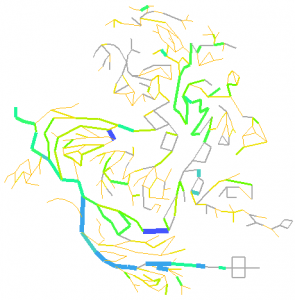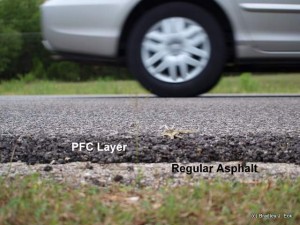GoFlex Horizon 2020 Project
The GoFlex project innovates, integrates and demonstrates electricity smart grid technologies for managing flexibility in energy production and consumption. The project creates a system to offer energy flexibility of producer-consumers to a market for subsequent use in balancing supply and demand. Demonstration sites are in Cyprus, Switzerland and Germany.
Water Networks
Water networks are the systems of pipes, pumps, valves, and tanks that provide drinking water to homes and businesses. My research in this area aims at improving the design and operation of water systems by developing new modelling techniques and software tools and by incorporating data from different kinds of sensors. Theoretical objectives of the work are to find optimality bounds for the optimization problems of interest and to improve the representation of physical processes in the underlying models.

- Hydraulic modelling — developed quadratic approximation for friction loss in water pipes to give reasonable simulation accuracy in a convenient mathematical form.
- Pump Scheduling — Suggested new approaches for finding feasible schedules and estimating lower bound of energy cost; considered uncertainty in electricity prices.
- Pressure management — Formulated the problem of placing pressure reducing valves as a mixed-integer non-linear program.
- Leakage assessment — Participated in battle of background leakage assessment for water networks at Water Distribution Systems Analysis 2014 conference.
- Water Demands — Explored consumption data from smart water meters and applications for such data in water utilities on the iWIDGET project.
Hydroinformatics
Improving the flow of information is central to improving water management in a wide variety of applications. My work in this area focuses on computing architectures and platforms to manage and analyze sensor data.
Permeable Friction Course

- Permeable friction course (PFC) is a porous asphalt overlay that allows water to drain through the pavement rather than over the pavement surface
- Created numerical model for PFC drainage–coupled unsteady sheet flow and unsteady seepage in two dimensions using the finite volume method; represented roadway geometry using coordinate transformation. See a video of one of these simulations!
- Analyzed life cycle cost of using PFC for stormwater treatment
- Designed and built field monitoring site for automatic collection of stormwater samples
- Surveyed PFC installations in Austin area; established passive monitoring sites at two locations to facilitate collection of paired stormwater samples
- Designed laboratory testing apparatus to measure hydraulic conductivity of PFC cores—determined size of components based on expected range of hydraulic conductivity; developed fabrication drawings
Stormwater BMPs for Rock Quarries

- Drafted literature review on water quality impacts and potential management practices for quarries
- Inspected quarry sites to assess current management practices
Compost for Erosion Control
- Performed statistical analysis of data from field trialsto evaluatehydrologic and water quality aspects of using compost for erosion control

Test plots with compost (left) and without (right) after 11 months. Photo by Todd Adams. - Compared three different treatments to an experimental control
- Developed multiple linear regression model of rainfall/runoff relationship
- Performed parametric and non-parametric hypothesis testing to identify differences between the treatments
- Estimated sediment and nutrient export for unmonitored events
